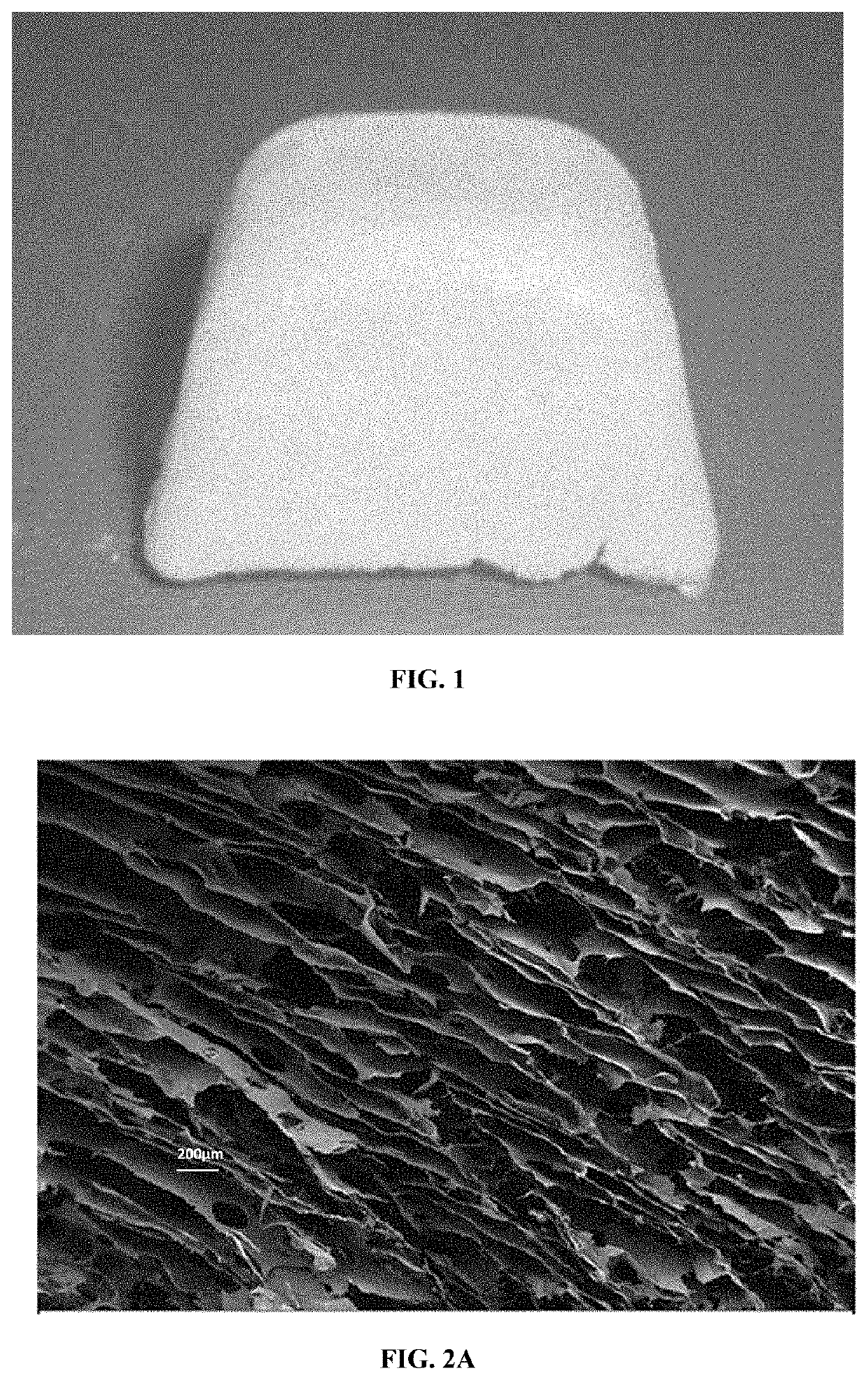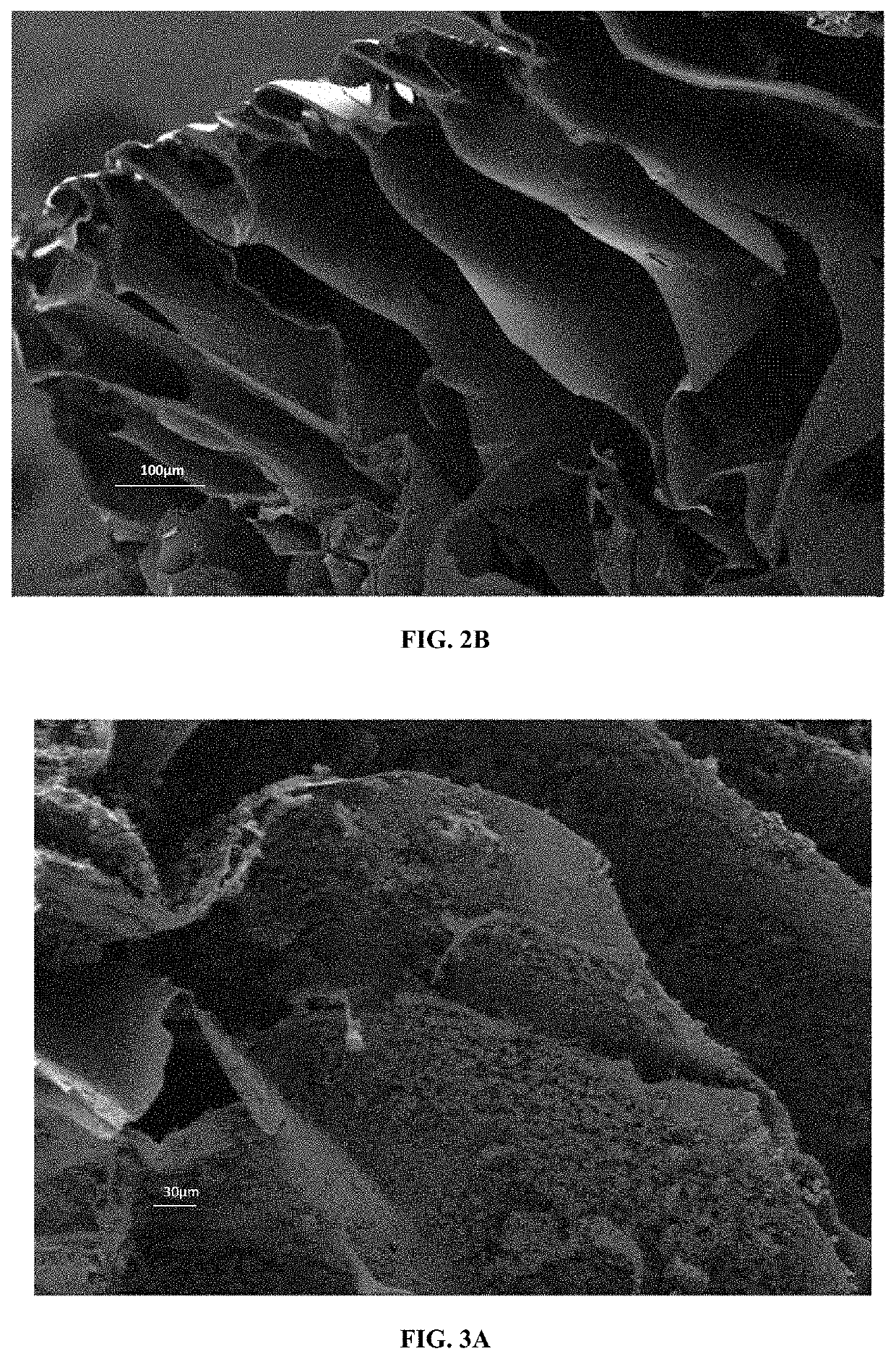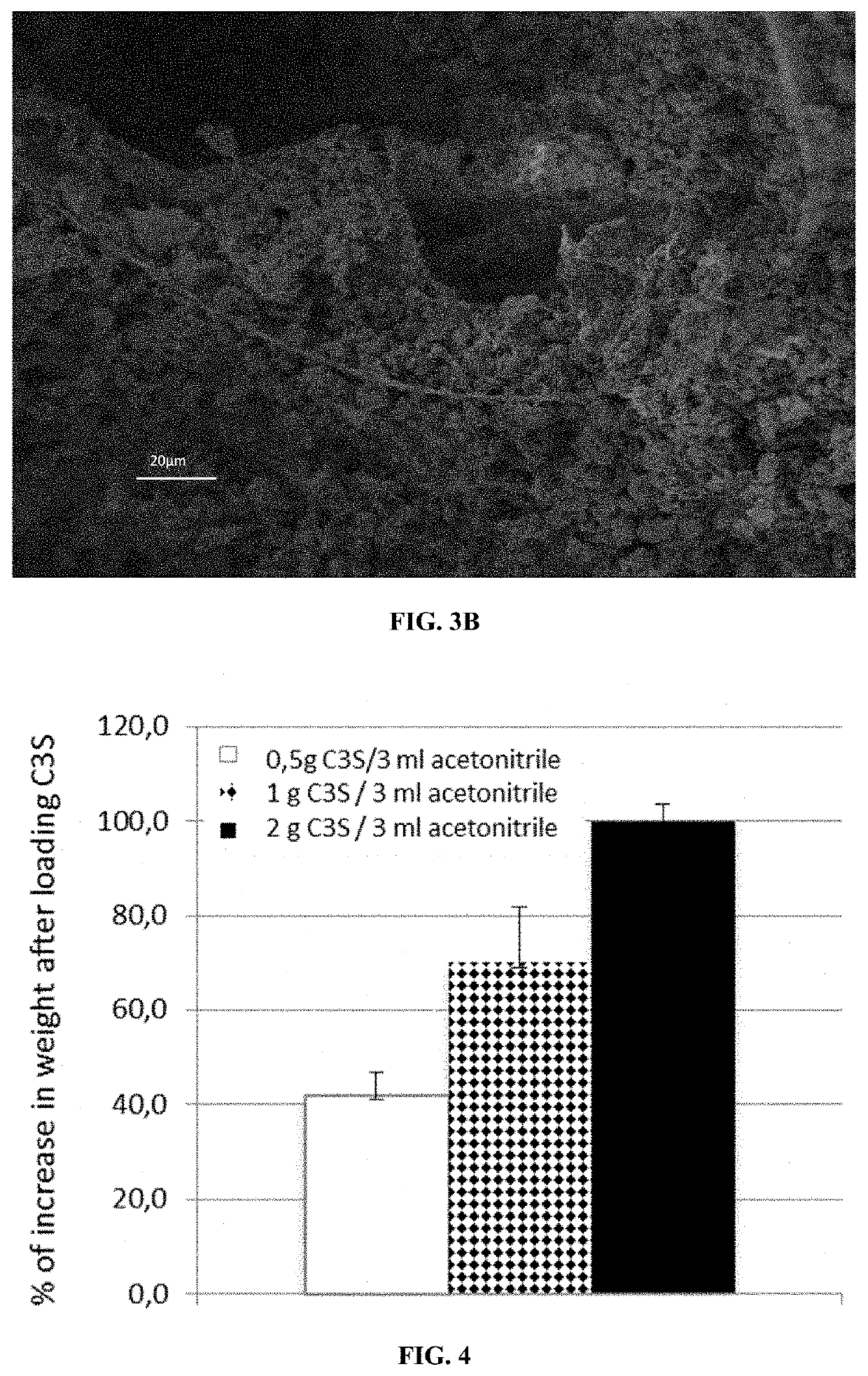Connective tissues, such as bone, dentin or pulp, regenerative material comprising calcium silicate
- Summary
- Abstract
- Description
- Claims
- Application Information
AI Technical Summary
Benefits of technology
Problems solved by technology
Method used
Image
Examples
example 1
opolymer Matrix
[0266]Several formulations have been made for manufacturing porous matrixes (see Table 1). The general protocol is described hereinafter.
TABLE 1Formulations for manufacturing porous polymer matrix.Formu-Acetic acidlationPolymer % in the(% in theNo.Nature of polymerformulationformulation)1Chitosan from mushroom212Chitosan from shrimp213Chitosan from mushroom114Chitosan from mushroom225Alginate206Alginate307Chitosan from1 (chitosan) / 1(alginate)0.5mushroom / Alginate8Chitosan from2(chitosan) / 2(alginate)1shrimp / alginate9Chitosan from1(chitosan) / 1(alginate)1crab / Alginate10Alginate1011Chitosan from crab21.512Alginate4013Chitosan from shrimp4114Chitosan from shrimp4315Chitosan from2(chitosan) / 2(alginate)1shrimp / alginate16Chitosan from2(chitosan) / 2(alginate)2shrimp / alginate17Chitosan from2(chitosan) / 2(alginate)1shrimp / alginate fibers18Chitosan from shrimp10 1.519Chitosan from shrimp41
[0267]General Protocol
[0268]A polymer solution was realized by mixing from 1 to 10% wt. of a po...
example 2
of the Regenerative Material of the Invention
[0277]General Protocol
[0278]A porous biopolymer matrix obtained as described in Example 1, has been immerged for 30 s into a solution comprising calcium silicate particles suspended in a polar solvent.
[0279]The calcium silicate particles may be non-hydrated tricalcium silicate particles (C3S), Biodentine™ powder or mineral trioxide aggregate (MTA) powder. In the examples, MTA particles were Pro Root MTA® canal repair material (manufactured by Dentsply) and had a size ranging from 1 μm to about 30 μm. MTA particles comprise tricalcium silicate, dicalcium silicate and optionally bismuth oxide (about 22%). The solvent may be acetonitrile, ethanol or acetone.
[0280]Loaded samples are then dried under vacuum during at least 1 h.
[0281]Characterization
[0282]The final materials were characterized by SEM. FIGS. 3A and 3B are presented for porous chitosan materials comprising C3S nanoparticles.
[0283]The results show that:[0284]the impregnation step ...
example 3
ng of Porous Matrix
[0288]3.1. From polymer matrix synthetized by the Applicant
[0289]The aim of this experiment was to show that calcium silicate nanoparticles loading may be modulated into the porous polymer matrix.
[0290]For this purpose, a porous matrix (formulation 15 in Table 1: chitosan 2% / alginate 2% and acetic acid 1%) was loaded with a solution comprising 0.5 g, 1 g or 2 g of C3S particles. The protocol is described in Example 2. In this protocol, the solvent was acetonitrile.
[0291]The results (FIG. 4) evidence that the porous matrix of the invention allows loading C3S particles whatever the concentration of C3S in the loading solution. The results also highlight that the C3S loading may be modulated depending on the concentration of the C3S loading solution.
[0292]3.2. From Commercial Hemostatic Sponges
[0293]Loading tests have been carried out by contacting a C3S solution (1 mg / ml) with three commercially available hemostatic sponges: Hemocollagene®, HemCom® and GelSpon®. The...
PUM
| Property | Measurement | Unit |
|---|---|---|
| Pore size | aaaaa | aaaaa |
| Distance | aaaaa | aaaaa |
| Fraction | aaaaa | aaaaa |
Abstract
Description
Claims
Application Information
 Login to View More
Login to View More - R&D
- Intellectual Property
- Life Sciences
- Materials
- Tech Scout
- Unparalleled Data Quality
- Higher Quality Content
- 60% Fewer Hallucinations
Browse by: Latest US Patents, China's latest patents, Technical Efficacy Thesaurus, Application Domain, Technology Topic, Popular Technical Reports.
© 2025 PatSnap. All rights reserved.Legal|Privacy policy|Modern Slavery Act Transparency Statement|Sitemap|About US| Contact US: help@patsnap.com



